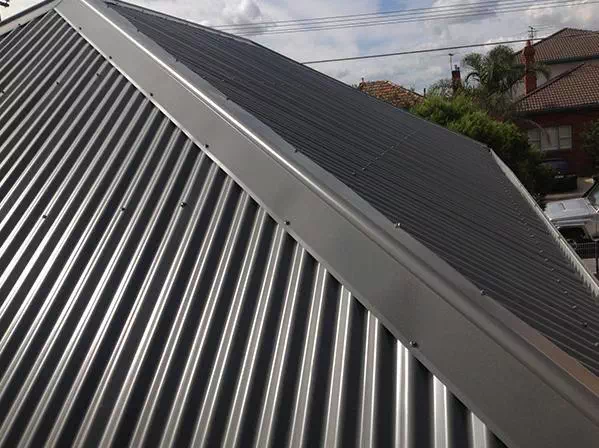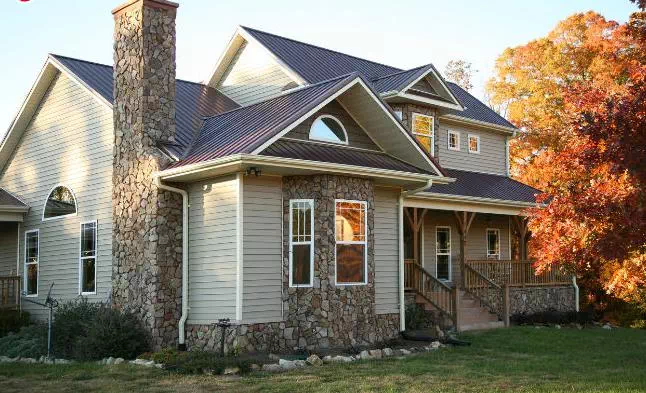Sales hotline
Sales hotline
How long has corrugated iron been around for?
Corrugated galvanized the iron was invented in the 1820s in Britain by Henry Robinson Palmer, architect and engineer to the London Dock Company. It was originally made from wrought iron.
Is corrugated iron the same as Colorbond?
Corrugated galvanised iron was invented in the 1820s in Britain by Henry Robinson Palmer, architect and engineer to the London Dock Company. It was originally made from wrought iron.

Some knowledge of corrugated iron sheet
Is it durable?
Corrugated iron roofing is extremely durable and they are completely weather resistant. We find that the metal plates in the roofing system come with a galvanized iron coating. This coating helps in creating a protective layer for the metal plates and ensures that the windows do not succumb to the forces of nature. Therefore, they add another great layer of protection to your roof which is otherwise impossible to provide for. Hence this shouldn’t be overlooked when you are trying to find the perfect roof for your house. You can easily maintain this roofing in a normal way and corrugated iron roofing is very cost-effective.
High or low maintenance?
Low maintenance. Generally speaking, a properly installed metal roof will last the lifetime of your home – think 60+ years. Unlike asphalt shingles which can require re-roofing every 10-20 years, a metal roof won’t crack, peel, fade or disintegrate. Metal roofs require significantly less maintenance than other roof types because they’re built to withstand extreme weather conditions as well as repel pests and complement rainwater capture systems.
Pros and cons of metal roofing
PRO: Metal roofs are durable and long-lasting.
At the top of the list of metal roofing “pros,” the material’s long lifespan is why most homeowners make the switch in either a re-roofing or new construction. Indeed, that recent McGraw-Hill survey found that 26 percent of homeowners cited longevity as their primary reason for investing in metal and another 22 percent said they were swayed by its strength. A properly installed metal roof typically will last as long as the house, with an expected lifespan of 40 to 70 years and, often, a 30- to 50-year manufacturer’s warranty to boot. (By contrast, traditional asphalt roofing typically lasts 12 to 20 years.) Thanks to the material’s unique durability, you can count on it to withstand the elements—including gusts of wind up to 140 miles per hour—and not corrode nor crack thanks to rust-proof coatings.
CON: Metal roofs are expensive.
The many years of service that a metal roof promises come at a high cost. This material can run from $120 to $900 per 100 square feet (or one “square” of material), according to Home Advisor’s Guide to Roofing Costs. Though this range is comparable to the costs of other premium roofing products, higher-end metals run as much as 10 times the cost of asphalt shingles. Then, not only do materials come with high price tags, but the installation labor is also more expensive than what you’d pay for other types of roofing because of the specialized training, knowledge, tools, and equipment it entails. That’s not to say that homeowners won’t recoup money on your initial investment, though. While you might have to pay for replacing a conventional asphalt shingle roof several times over the lifespan of your home, a high-quality metal roof could very likely be the last roof your home will ever need. It’s as the saying goes, “You get what you pay for.”

Some knowledge of corrugated iron sheet
PRO: Metal roofs are environmentally friendly.
Traditional asphalt shingles are a petroleum product and, as such, increase dependency on fossil fuels. Plus, they require replacement every 15 to 20 years, which means that nearly 20 billion pounds of old asphalt shingles are sent to U.S. landfills every year, according to the Environmental Protection Agency.
Metal roofs, on the other hand, are considered a more sustainable alternative for a number of reasons. For starters, they consist of at least 25 percent recycled materials and are 100 percent recyclable themselves. (Steel roofing can be recycled repeatedly without loss of strength!) Metal roofing also provides an ideal platform for homeowners who want to embark on various eco-conscious initiatives, including solar panels and systems for harvesting rainwater. Finally, in some re-roofing projects, a metal roof is so light—roughly one-third the weight of asphalt—that it can be installed directly overtop asphalt shingles without overburdening the roof’s structural support. This strategic move saves the effort and sheer waste of ripping off the old roofing and sending it to a landfill.
CON: Metal roofs can be dented.
Although today’s metal roofs are designed to withstand decades of abuse from extreme weather—including heavy snow and ice, both of which slide right down the slick metal slope rather than linger and cause leakage—some metal can still be dented by large hail or falling branches. Depending on the type of roof, you may not even be able to walk on the metal shingles without damaging them. If these drawbacks sound more like dealbreakers, rest assured that they can be sidestepped altogether if you choose the right shingle (preferably one that comes with a guarantee to never dent!). Some types of metal are just stronger than others. Aluminum and copper, for example, are both softer and therefore more prone to this type of damage than, say, steel.
Sales hotline:

 Scan and consult wechat customer service
Scan and consult wechat customer service